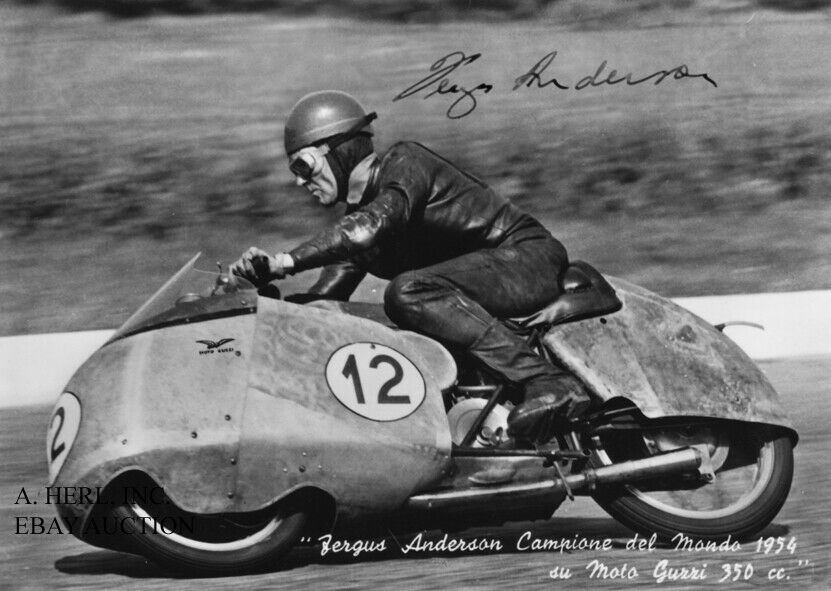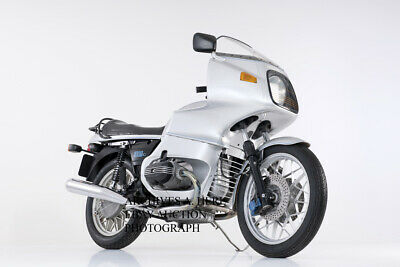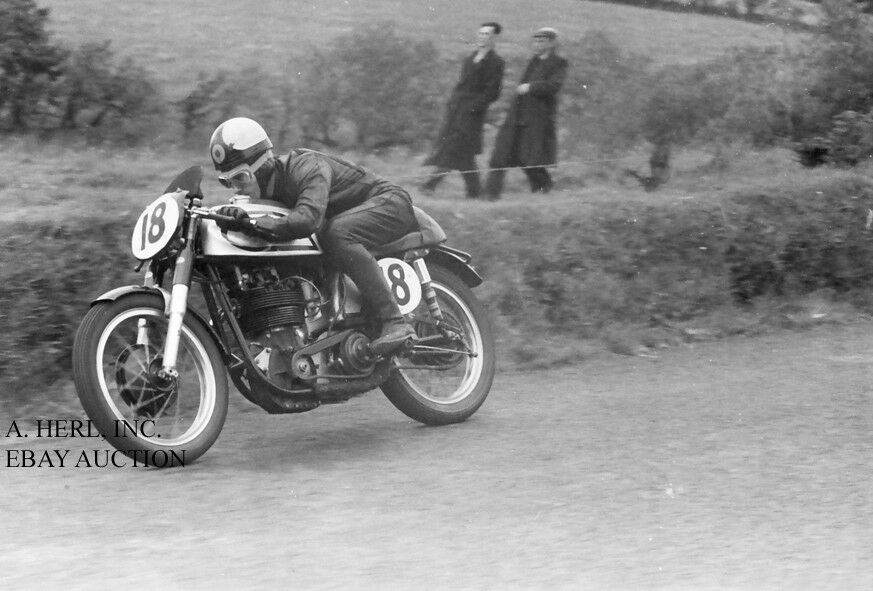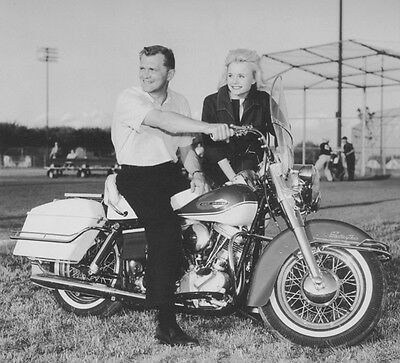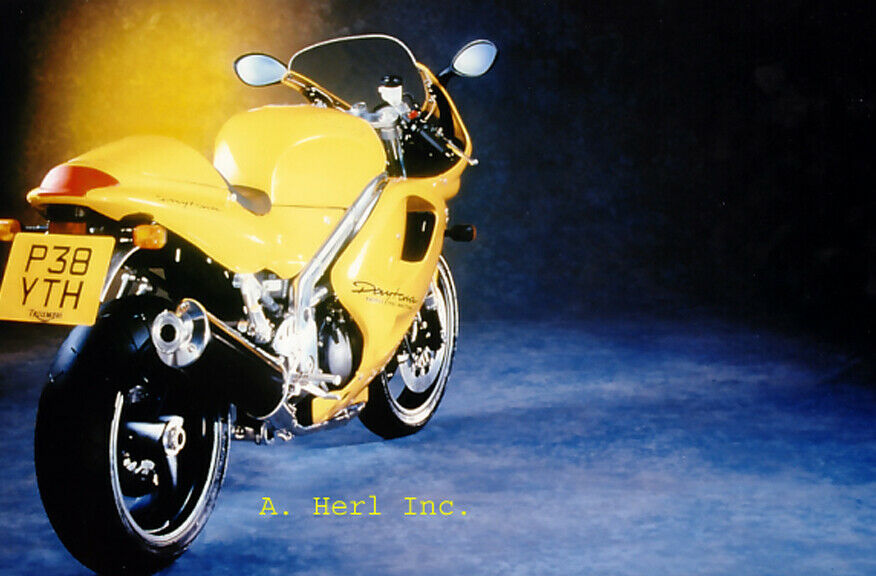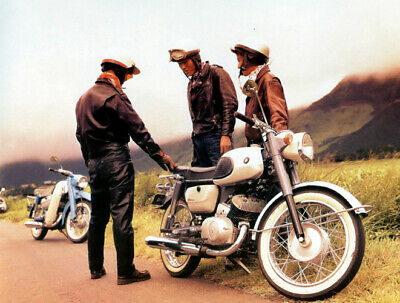-40%
Triumph motorcycle racers 1967 Baja 1000 motorcycle racing photo photograph
$ 5.14
- Description
- Size Guide
Description
A superb and rare photo of the1967
Baja 1000 race.
Triumph Motorcycles
was originally based in Coventry. A new company in Hinckley took over the name rights after the collapse of the company in the 1980s. The company began in 1885 when Siegfried Bettmann emigrated to Coventry in England from Nuremberg, part of the German Empire. In 1884 aged 20, Bettmann founded his own company, the S. Bettmann & Co. Import Export Agency, in London. Bettmann's original products were bicycles, which the company bought and then sold under its own brand name. Bettmann also distributed sewing machines imported from Germany. In 1886, Bettmann sought a more universal name, and the company became known as the Triumph Cycle Company. A year later, the company registered as the New Triumph Co. Ltd., now with financial backing from the Dunlop Pneumatic Tyre Company. In that year, Bettmann was joined by another Nuremberg native, Moritz Schulte. Schulte encouraged Bettmann to transform Triumph into a manufacturing company, and in 1888 Bettmann purchased a site in Coventry using money lent by his and Schulte's families. The company began producing the first Triumph-branded bicycles in 1889. In 1896, Triumph opened a subsidiary, Orial TWN (Triumph Werke Nuremberg) a German subsidiary for cycle production in his native city. In 1898, Triumph decided to extend its own production to include motorcycles and by 1902, the company had produced its first motorcycle - a bicycle fitted with a Belgian-built engine. In 1903, as its motorcycle sales topped 500, Triumph opened motorcycle production at its unit in Germany. During its first few years producing motorcycles, the company based its designs on those of other manufacturers. In 1904, Triumph began building motorcycles based on its own designs and in 1905 produced its first completely in-house designed motorcycle. By the end of that year, the company had produced more than 250 of that design. In 1907, after the company opened a larger plant, production reached 1,000 bikes. Triumph had also launched a second, lower-end brand, Gloria, produced in the company's original plant. The outbreak of World War I proved a boost for the company as production was switched to support the Allied war effort. More than 30,000 motorcycles - among them the Model H Roadster aka the "Trusty Triumph," often cited as the first modern motorcycle - were supplied to the Allies. Bettmann and Schulte fell out after the war, with Schulte wishing to replace bicycle production with cars. Schulte left the company, but in the 1920s Triumph purchased the former Hillman car factory in Coventry and produced a saloon car in 1923 under the name of the Triumph Motor Company. Harry Ricardo produced an engine for their latest motorbike. By the mid-1920s Triumph had grown into one of Britain's leading motorcycle and car makers, with a 500,000 square feet (46,000 m2) plant capable of producing up to 30,000 motorcycles and cars each year. Triumph also found its bikes in high demand overseas, and export sales became a primary source of the company's revenues, although for the United States, Triumph models were manufactured under license. The company found its first automotive success with the debut of the Super Seven car in 1928. Shortly after, the Super Eight was born. When the Great Depression hit in 1929, Triumph spun off its German subsidiary as a separate, independently owned company, which became part of the Triumph-Adler Company. The Nuremberg firm continued to manufacture motorcycles under the Triumph brand until 1957. In 1932, Triumph sold off another part of the company, its bicycle manufacturing facility to Raleigh. By then, Triumph had been struggling financially, and Bettmann had been forced out of the chairman's spot. He retired completely in 1933. In 1936, the company's two components became separate companies. Triumph always struggled to make a profit from cars, and after going bankrupt in 1939 was acquired by the Standard Motor Company. The motorcycle operations fared better, having been acquired in 1936 by Jack Sangster, who also owned the rival Ariel motorcycle company. That same year, the company began its first exports to the United States, which quickly grew into the company's single most important market. Sangster's formed the Triumph Engineering Co Ltd largely led by ex-Ariel employees, including Edward Turner who designed the 500 cc 5T Speed Twin - released in September 1937, and the basis for all Triumph twins until the 1980s. Contrary to popular belief, however, this was not Triumph's first parallel twin. This honour falls to the Val Page designed, but unpopular, 6/1. After Turner arrived, in his usual brusque manner, the 6/1 was dropped, later to be replaced with Turner's design. The 6/1 engine later resurfaced, somewhat modified, as the BSA A10. In 1939 the 500 cc Tiger T100, capable of 100 miles per hour (160 km/h), was released, and then the war began. Motorcycles were produced at Coventry until World War II. The town of Coventry was virtually destroyed in The Blitz (September 7, 1940 to May, 1941). Tooling and machinery was recovered from the site of the devastation and production restarted at the new plant at Meriden, West Midlands in 1942. (It was actually the village of Allesley, which was difficult to find on a map!) One of Triumph's wartime products is of particular interest: portable generators for the RAF, using 500 cc Triumph engines with alloy barrels. The Speed Twin designed by Edward Turner before the war was produced in large numbers after the war. Efforts to settle the lend-lease debts caused nearly 70% of Triumphs post war production to be shipped to the United States. Post War, the Speed Twin and Tiger 100 were available with a sprung rear hub, Triumph's first attempt at a rear suspension. Privateers put wartime surplus alloy barrels on their Tiger 100 racers, and won races, inspiring the Triumph GP model. By 1950 the supply of barrels was exhausted, and the GP model was dropped. The American market applied considerable pressure to reverse this backward step, and a die cast close finned alloy barrel was made available. The alloy head made the valve noise more obvious, so ramp type cams were introduced for alloy head models to reduce the noise. Another motorcycle based on the wartime generator engine was the 499 cc TR5 Trophy Twin, also introduced at the 1948 Motor Cycle Show. It used a single carburettor, low compression version of the Grand Prix engine. Britain won the prestigious 1948 International Six Days Trial. The Triumph works team had finished unpenalised. One team member, Allan Jefferies, had been riding what amounted to a prototype version. To satisfy the American appetite for motorcycles suited to long distance riding, Turner built a 650 cc version of the Speed Twin design. The new bike was named the Thunderbird (A name Triumph would later license to the Ford Motor Company for use on a car). In 1950 Bobby Turner in Southern California set many speed records with a highly tuned version of the 650 Thunderbird. Several other riders like Ed Kretz and Blackie Blullock used the same machine, nicknamed “Wonderbird” also in speed record events and racing. Amazingly, the Thunderbird engine, its design origins from 1939, held the world's absolute speed record for motorcycles from 1955 until 1970. The Triumph brand received considerable publicity in the United States when Marlon Brando rode a 1950 Thunderbird 6T in the 1953 motion picture, The Wild One. The Triumph Motorcycle concern was sold to their rivals BSA by Sangster in 1951. This sale included Sangster becoming a member of the BSA board. Sangster was to rise to the position of Chairman of the BSA Group in 1956. The production 650 cc Thunderbird was a low compression tourer, and the 500 cc Tiger 100 was the performance bike. That changed in 1954, with the change to swing arm frames, and the release of the alloy head 650 cc Tiger 110, eclipsing the 500 cc Tiger 100 as the performance model. In 1959, the T120, a tuned double carburettor version of the T110, came to be called the Bonneville. As Triumph and other marques gained market share, Harley became aware that their 1 litre-plus bikes were not as sporty as the modern rider would like, resulting in a shrinking share of the market. The Triumphs were models for a new, "small" Harley Davidson as a result: the now-fabled Sportster, which started out as Harley's version of a Triumph Bonneville. With its anachronistic V-twin, the Sportster was no match for the Bonneville, but it proved a solid competitor in US sales and eventually also in longevity.
This is your rare chance to own this
non period
photo that reflects a very interesting and historic piece of motorcycle history. Therefore it is printed in a nice large format of ca. 8" x 12” (ca. 20 x 30 cm).
Shipping costs will only be $ 7.00 regardless of how many photos you buy. For 5 or more photos, shipping is free!
(Note: A. Herl, Inc. does not appear on photo, for ebay purposes only)
No copyright expressed or implied. Sold as collectable item only. We are clearing out our archives that we have gathered from various sources.
All items always sent well protected in PVC clear files
and board backed envelopes.
We have photographs that came from professional collections and/or were bought from the original photographer or press studio! They are all of professional and excellent quality.
After many decades of professionally collecting photographs and posters we are clearing out our archives. They make the perfect gift and are perfectly suited for framing. They will look gorgeous unframed and will be a true asset nicely framed with a border. They are a gorgeous and great asset in every home, workshop, workplace, restaurant, bar or club!
First come - first served. And you can always contact us for your requests. Please ask any questions before the auction ends.

